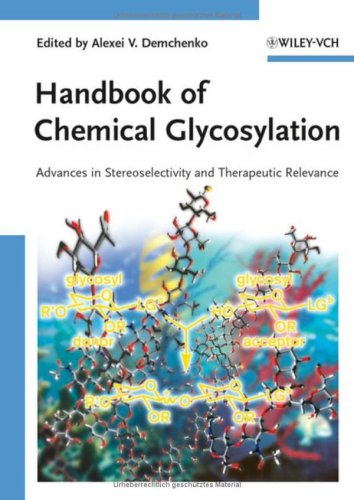(Ebook) The Sugar Code Fundamentals of Glycosciences by Hans-Joachim Gabius ISBN 9783527320899, 9783527306329, 352732089X, 3527306323
There are three major classes of biological macromolecules, all of which encodeinformation essential for the life of the organism. Nucleic acids and proteins arelinear molecules in which the individual subunits (nucleotides and amino acids,respectively) are linked by identical phosphate and peptide bonds, respectively.Glycans are signifi cantly more complex. The linkages between individual subunits(monosaccharides such as hexoses, hexosamines, pentoses, etc.) are not identical;the anomeric carbon atom can be linked either by an alpha or beta bond to oneof several carbon atoms on the adjoining monosaccharide. The resulting macro-molecule may be linear or branched and may be covalently attached to a proteinor lipid. Glycans are therefore highly effi cient vehicles for information storage –more value for the money.The apparatus required for glycan assembly is unique. Whereas the biosynthesisof nucleic acids and proteins is carried out by relatively simple template mecha-nisms, glycans require a complicated non - template assembly line (very similar toan automobile assembly line) where many different workers and machines (mem-branous organelles and vesicles, enzymes, transporters, structural proteins) func-tion in harmony to manufacture the fi nal product from a complex collection ofprimary building materials.Glycosciences have received far less attention than they deserve in undergradu-ate, graduate and post - graduate life sciences courses. This is primarily because ofthe complexity of glycan structures and the diverse functions that have been attrib-uted to them. There has also been a relative lack of suitable textbooks. The editorand authors of this book have fully succeeded to present the many aspects ofglycosciences including their roots in a clear and effi cient manner ready to enterclassrooms. It is also gratifying that ‘ Info boxes ’ are used in this book to coverinteresting ‘ side ’ topics relevant to the general discussion. An extensive ‘ Glossary ’allows rapid access to unfamiliar terms. Glycobiology is a huge fi eld that affectsevery known biological organism: prokaryotes, protozoa, fungi, plants, inverte-brates and vertebrates. Since it is impossible to deal with everything, the highlyrelevant and important topics are covered in this book, and an excellent com-promise between total knowledge and teaching requirements has been achieved. VIII ForewordThe original concept of the Central Dogma by Francis Crick ignored post -translational modifi cations (such as protein glycosylation) that greatly magnify thefunctions of a single protein encoded by a particular gene. The above brief discus-sion should be suffi cient to convince the reader that glycans certainly play pivotalfunctional roles in biology. This book provides the detailed evidence to teach thislesson.Toronto, July 2009Harry Schachter
*Free conversion of into popular formats such as PDF, DOCX, DOC, AZW, EPUB, and MOBI after payment.


